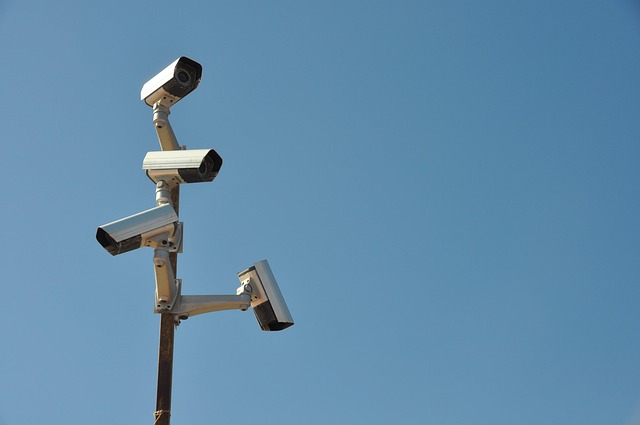Global legal frameworks governing controlled entry systems balance security and personal freedoms through regulations like CCTV laws. Organizations must identify and stay updated on local privacy, data protection, and physical security laws to avoid penalties and protect themselves from legal issues. Compliance involves robust security protocols, transparent policies, regular audits, risk assessments, and staying informed about evolving legal landscapes. Proactive risk management, updates, and adherence to standards maintain system integrity against emerging threats and ensure compliance with global data privacy regulations.
In today’s digital age, robust access control systems are paramount for businesses and organizations. However, implementing these technologies comes with a legal and regulatory burden, particularly for sensitive areas requiring controlled entry systems. This article delves into navigating the intricate landscape of legal frameworks and regulatory requirements governing access control. We explore best practices for implementation, continuous monitoring, and updating access protocols to ensure compliance, fostering secure environments without compromising efficiency.
Understanding Legal Framework for Access Control
The legal framework governing access control systems, including controlled entry systems, varies across jurisdictions but is designed to ensure privacy, security, and compliance with human rights laws. Key regulations often focus on data protection, surveillance, and the rights of individuals in public or private spaces. For instance, in many countries, the installation and operation of closed-circuit television (CCTV) cameras are subject to strict rules regarding consent, data storage, and access. These legal requirements ensure that controlled entry systems are implemented ethically, with a balance between maintaining security and respecting personal freedoms.
Understanding these laws is crucial for businesses and organizations implementing access control measures. Compliance not only avoids potential penalties but also boosts the credibility of such systems as tools for enhancing safety without infringing on civil liberties. Companies must stay informed about relevant legislation, ensuring their controlled entry systems meet all necessary legal standards to protect both the organization and its visitors or employees.
Identifying Regulatory Requirements for Controlled Entry Systems
Identifying the regulatory requirements for controlled entry systems is a critical step in ensuring your access control measures are both effective and compliant. Different jurisdictions have distinct laws governing privacy, data protection, and physical security, which directly impact controlled entry systems. For instance, many countries have strict regulations around biometric data collection and storage, requiring organizations to implement robust security measures to protect this sensitive information.
When evaluating regulatory obligations, consider the nature of your business and the sensitivity of areas requiring controlled entry. This may involve scrutinizing local data protection acts, privacy laws, and industry-specific standards. Staying informed about updates to these regulations is essential as they can significantly influence the design and operation of access control systems, ensuring compliance with legal frameworks governing controlled entry systems.
Implementing Compliance Measures: Best Practices
Implementing compliance measures is a vital step in ensuring that access control systems, such as controlled entry systems, operate within legal and ethical boundaries. Best practices involve integrating robust security protocols with transparent user policies. This includes regular audits to verify system adherence to relevant data protection laws and industry standards, like GDPR or ISO 27001. By conducting these audits, organizations can identify and rectify any discrepancies or vulnerabilities in their access control mechanisms promptly.
Additionally, staying informed about evolving legal landscapes is crucial. Regular updates on privacy legislation, security guidelines, and sector-specific regulations are essential to maintaining compliance. Implementing dynamic risk assessment frameworks allows businesses to adapt their controlled entry systems accordingly, balancing security with user experience. This proactive approach fosters trust among stakeholders and ensures the system remains effective in protecting sensitive areas while facilitating legitimate access.
Continuous Monitoring and Updating of Access Protocols
Access control systems, or controlled entry systems, require consistent vigilance to maintain security and adhere to legal standards. Continuous monitoring involves staying attuned to potential vulnerabilities and evolving security threats. This proactive approach ensures that access protocols remain robust against new forms of exploitation. Regular updates are integral to this process, reflecting changes in technology, legislation, and societal needs. By keeping up with these developments, access control systems can offer dynamic protection tailored to contemporary risks.
Such ongoing maintenance includes patch management for software vulnerabilities, revision of access rights based on employee roles and responsibilities, and implementation of the latest encryption standards. It also encompasses staying informed about regional and international regulations governing data privacy and personal security. Effective monitoring and updating are key to ensuring controlled entry systems remain not only secure but also compliant with legal frameworks.
Ensuring legal and regulatory compliance in access control systems is paramount for maintaining security, privacy, and public safety. By understanding the intricate legal framework governing controlled entry systems and adhering to identified regulatory requirements, organizations can implement robust compliance measures. Best practices include regular audits, staff training, and leveraging advanced technologies for continuous monitoring. Keeping access protocols up-to-date with evolving regulations not only mitigates risks but also fosters a secure environment for all users, making it a crucial step in the ongoing management of controlled entry systems.
